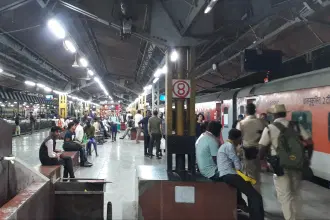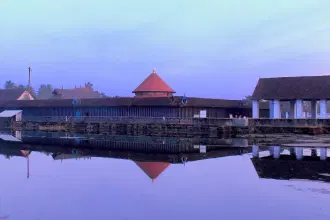Infrastructure
Kolkata’s Historic Tram Service Slows To A Halt, Save For One Route: Take A Quick Look At Its 150-Year Journey
V Bhagya Subhashini
Sep 27, 2024, 12:23 PM | Updated 12:23 PM IST
Save & read from anywhere!
Bookmark stories for easy access on any device or the Swarajya app.


Kolkata’s historic tram service, which has been in operation for 150 years, is nearing the end of the line as the West Bengal government has decided to discontinue most routes.
However, a single heritage route between Maidan and Esplanade will remain operational to preserve the city’s connection to its past.
This route is intended to give residents and tourists an opportunity to experience tram travel in a scenic and eco-friendly manner, preserving a small part of Kolkata’s rich cultural history.
It is the only tram network operational in India. It is also the oldest running electric tram system in Asia since its beginnings.
Ever since the first tram rolled onto the tracks on 24 February 1873, this electrically driven carriage has withstood the test of time, marking key moments in Kolkata’s history.
From carrying freedom fighters during India’s struggle for independence to serving as a daily commuter service through eras of change, Kolkata’s trams have been a steadfast witness to history.
Kolkata's Tram System: A Brief History
The first attempt to establish a tram service in Kolkata was made in 1873. It was a 3.9 km route between Sealdah and Armenian Ghat. However, the service was short-lived, folding the same year due to insufficient patronage.
It wasn’t until 1880 that the Calcutta Tramway Co Ltd was formed and registered in London, marking the revival of tram services in the city, initially drawn by horses and inaugurated by Lord Ripon, the then Viceroy.
The network expanded rapidly, with electrification completed by 1905. Between 1906 and 1943, the tram system grew significantly, spanning approximately 68 km across Kolkata and Howrah.
An experiment with steam locomotives took place in 1882, leading to the company’s expansion by the century's end, owning 166 tram cars, 1,000 horses, and seven steam locomotives.
The first electric tram debuted in Asia on 27 March 1902, operating from Esplanade to Kidderpore, followed by a route to Kalighat on 14 June.
After India’s independence, the West Bengal Government and the Calcutta Tramways Company formalised their partnership in 1951 through the Calcutta Tramways Act, granting the government rights to manage the system and the option to purchase it with prior notice.
Trams Versus Traffic
Transport Minister Snehasis Chakraborty said that the decision to retire trams was driven by practical considerations. In an increasingly congested city, slow-moving trams have become a significant impediment to traffic flow, especially during peak hours.
"Commuters today demand faster modes of transport, and in the current scenario, trams contribute to congestion rather than providing a solution," the minister said.
Kolkata's roads, which account for only 6 per cent of the city's surface area, struggle to accommodate both modern vehicular traffic and the tram network. The government has already suspended tram services on several routes, citing the need for more efficient road use.
Chakraborty noted that the issue is currently being reviewed by the Calcutta High Court. The state government will present its case in the next hearing, arguing that trams, while historically significant, no longer serve the needs of the city’s growing population and evolving infrastructure.
"Trams are undoubtedly part of Kolkata’s heritage, but with the increasing pressure on limited road space, we have observed that they can no longer function alongside other forms of transport without causing significant delays and disruptions," Chakraborty said.
As news of the decision spreads, many Kolkata residents, particularly tram enthusiasts, have expressed disappointment and are planning protests. For them, trams represent not just a mode of transportation but a symbol of the city’s unique character, according to The Hindu report.
While the heritage route will allow some continuity, the widespread discontinuation reflects the broader challenges of balancing tradition with modern urban needs.
V Bhagya Subhashini is a staff writer at Swarajya. She tracks infrastructure developments.





